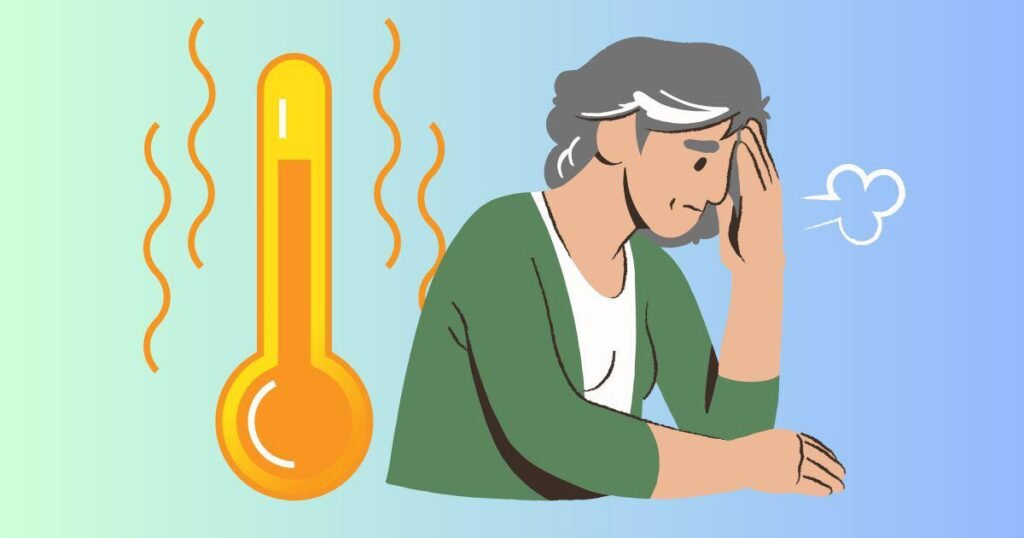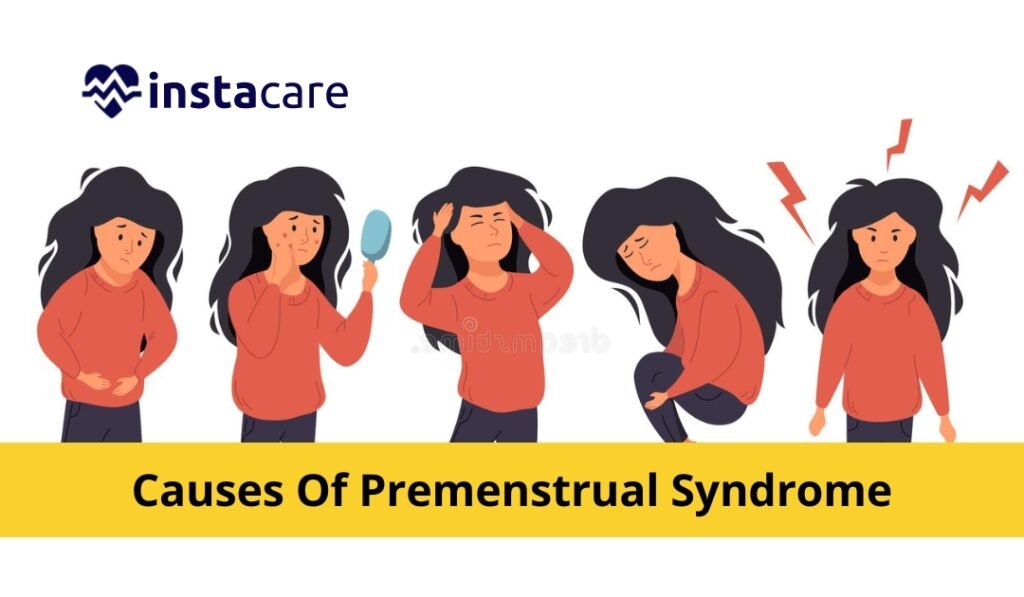
What is A Hot Flash ?
A hot flash is a sudden sensation of intense heat, often accompanied by sweating, flushing (redness), and a rapid heartbeat. It primarily affects the upper body, including the face, neck, and chest. These episodes can range from a mild warmth to a more uncomfortable or even overwhelming experience. They typically last between 30 seconds and 10 minutes, but their frequency and duration vary from person to person.
Hot flashes are most commonly associated with menopause, but they can also occur due to other factors, such as medical conditions or lifestyle triggers.
What Happens During a Hot Flash?
Hot flashes are caused by a temporary malfunction in the body’s thermoregulatory system, which is controlled by the hypothalamus (the part of the brain responsible for temperature regulation). When this system becomes hypersensitive, it overreacts to minor changes in body temperature, causing:
- Dilation of blood vessels: This increases blood flow to the skin, producing the sensation of heat and visible redness.
- Sweating: The body’s attempt to cool itself down, which may result in perspiration.
- Post-flash chills: After the episode, the body may feel cold as it compensates for the rapid heat loss.
Who Gets Hot Flashes?
Menopausal and Perimenopausal Women
- Hot flashes are the most common symptom of menopause, affecting around 75% of women during this transition. They are caused by declining estrogen levels, which disrupt the hypothalamus.
Men and Women with Hormonal Imbalances
- Hormone-related conditions, such as hypogonadism or endocrine disorders, can trigger hot flashes.
Medical Treatments
- Certain cancer treatments, such as chemotherapy, radiation, or hormone therapy (e.g., tamoxifen for breast cancer or androgen-deprivation therapy for prostate cancer), can induce hot flashes.
- Medications, such as opioids, steroids, or certain antidepressants, may also trigger them.
Underlying Medical Conditions
- Hyperthyroidism (overactive thyroid)
- Carcinoid syndrome (rare tumors releasing hormones)
- Diabetes (sometimes due to low blood sugar levels)
Other Triggers
- Emotional stress, anxiety, or panic attacks
- Alcohol, caffeine, spicy foods, or smoking
- Environmental heat or heavy clothing

Symptoms of Hot Flashes
- Sudden warmth spreading across the upper body.
- Skin flushing, often visible on the face, neck, and chest.
- Profuse sweating, especially during nighttime (referred to as “night sweats”).
- Increased heart rate, leading to palpitations.
- Post-flash chills, once the episode ends.
How to Manage Hot Flashes?
Lifestyle Adjustments
- Dress in layers that you can remove during a flash.
- Use fans or air conditioning to stay cool.
- Avoid hot flash triggers such as alcohol, caffeine, spicy foods, and stress.
2. Diet and Nutrition
- Eat foods rich in phytoestrogens (e.g., soy, flaxseeds).
- Maintain a balanced diet with plenty of fruits, vegetables, and whole grains.
3. Stress Management
- Practice yoga, deep breathing, or mindfulness meditation to reduce stress and regulate your body’s response.
4. Herbal Supplements
- Black cohosh and red clover may help with symptoms, though scientific evidence varies.
- Consult with a healthcare provider before starting supplements.
5. Medical Treatments
- Hormone Replacement Therapy (HRT): Effective but not suitable for everyone.
- Non-hormonal medications: Antidepressants, gabapentin, or clonidine can reduce symptoms.
6. Stay Hydrated
- Drink cold water throughout the day to keep your body temperature stable.
When to Seek Medical Advice
While hot flashes are often benign, consider seeing a doctor if:
- They significantly disrupt your quality of life.
- They occur at an unusual age (e.g., before menopause or in men).
- You experience other symptoms like unexpected weight loss, fatigue, or palpitations, which could indicate an underlying medical condition.
By understanding the triggers and underlying causes, you can work toward reducing their frequency and severity, improving your overall comfort and well-being.

What is PMS ?
Premenstrual Syndrome (PMS) is a group of physical, emotional, and behavioral symptoms that many individuals with menstrual cycles experience in the days or weeks before their period. PMS typically occurs during the luteal phase of the menstrual cycle (the time between ovulation and menstruation) and resolves shortly after the period begins.
Common Symptoms of PMS
MS symptoms can vary greatly in type and severity among individuals, but they generally fall into two categories:
1. Physical Symptoms
- Abdominal bloating
- Breast tenderness or swelling
- Headaches or migraines
- Fatigue or low energy
- Muscle or joint pain
- Acne outbreaks
- Changes in appetite or food cravings
- Sleep disturbances
2. Emotional and Behavioral Symptoms
- Mood swings or increased emotional sensitivity
- Irritability or anger
- Feelings of sadness or depression
- Anxiety or tension
- Difficulty concentrating
- Social withdrawal

What Causes PMS?
The exact cause of PMS isn’t fully understood, but several factors are believed to contribute:
Hormonal Fluctuations
- Changes in estrogen and progesterone levels during the menstrual cycle can influence neurotransmitters in the brain, like serotonin, which regulate mood.
Neurotransmitter Sensitivity
- Lower serotonin levels may lead to emotional symptoms like depression or irritability.
Lifestyle Factors
- Poor diet, lack of exercise, and inadequate sleep can worsen symptoms.
Underlying Health Issues
- Conditions like depression, anxiety, or thyroid disorders can make PMS symptoms more severe.
Who is affected ?
- PMS affects about 75% of menstruating individuals, with symptoms ranging from mild to severe.
- Severe cases of PMS may indicate a related condition called Premenstrual Dysphoric Disorder (PMDD), which significantly impacts daily life and emotional well-being.
How to Manage PMS Naturally ?
Dietary Adjustments
- Eat a balanced diet rich in whole grains, fruits, vegetables, and lean proteins.
- Limit salt, sugar, caffeine, and alcohol to reduce bloating and mood swings.
- Incorporate foods high in magnesium, calcium, and vitamin B6, which may help alleviate symptoms.
Exercise Regularly
- Engage in aerobic activities like walking, swimming, or cycling to boost endorphins and reduce stress.
Stress Management
- Practice relaxation techniques such as yoga, meditation, or deep breathing.
Herbal Remedies
- Supplements like chasteberry (Vitex), evening primrose oil, and ginkgo biloba may provide relief. Always consult a healthcare provider before using herbal treatments.
Sleep Hygiene
- Maintain a consistent sleep schedule and create a relaxing bedtime routine.
Stay Hydrated
- Drink plenty of water to combat bloating and improve energy levels.
Natural Pain Relief
- Use heating pads or take warm baths to relieve cramps and muscle aches.
Medical Management of PMS
If natural remedies don’t provide sufficient relief, consult a healthcare provider for:
- Medications: Over-the-counter pain relievers (e.g., ibuprofen), hormonal contraceptives, or antidepressants.
- PMDD Treatment: For severe cases, therapy or prescription medications may be recommended.
When to see a doctor ?
- Symptoms interfere significantly with daily life or relationships.
- Emotional symptoms like depression or anxiety are severe.
- You suspect PMDD or another underlying condition.
PMS is a common and manageable condition. With the right strategies, most individuals can find significant relief and improve their overall quality of life.
Follow @shikha.agarwal02 for more health insights
or for consultation whatsapp at +91 82400 22632 , +91 98311 91518
